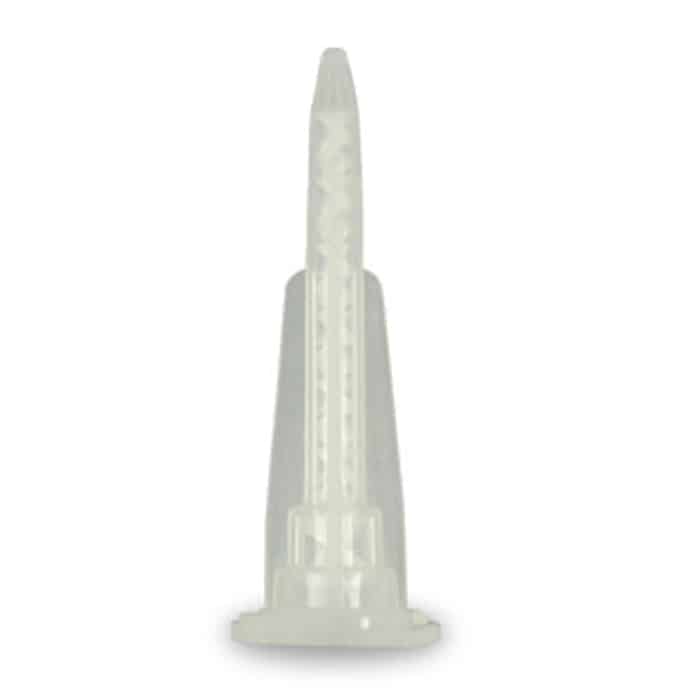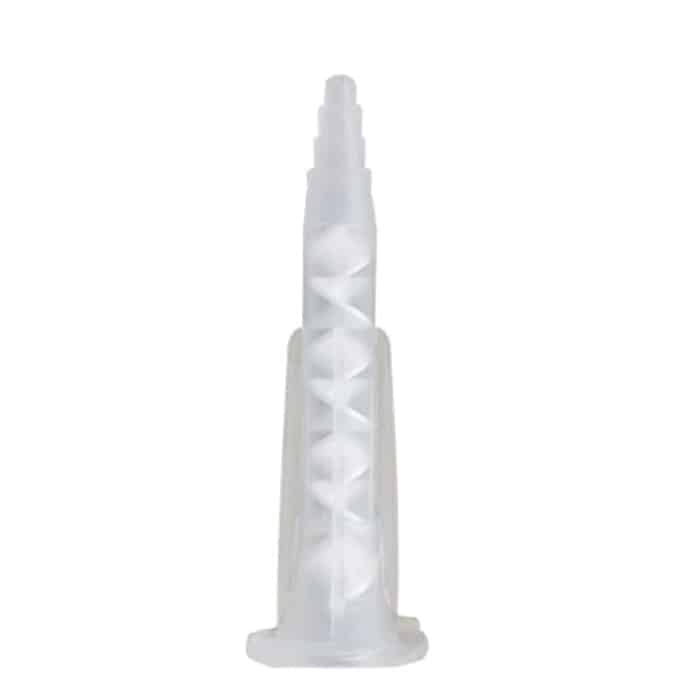Epoxy resins are versatile and widely used materials in various industries, ranging from construction and automotive to electronics and crafts. One of the critical components in using epoxy effectively is the mixing process, which ensures the proper combination of the resin and hardener components. Mixing nozzles, designed to facilitate the accurate and uniform mixing of these components, sometimes exhibit a common issue: they turn yellow over time. In this article, we delve into the reasons behind this phenomenon and explore potential solutions.
The Science Behind Epoxy Yellowing:

Epoxy mixing nozzles are typically made from plastic polymers, such as polyethylene or polypropylene. While these materials are chosen for their durability and chemical resistance, they are not completely impervious to environmental factors and chemical reactions. The yellowing of epoxy mixing nozzles can be attributed to several key factors:
-
UV Exposure:
Epoxy mixing nozzles used in outdoor applications or those exposed to sunlight can experience photodegradation. UV rays from the sun can break down the polymer chains in the plastic, leading to discoloration and a yellowing effect. This is a common issue with plastic materials that are not UV-stabilized.
-
Oxidation:
Over time, the plastic polymers in the mixing nozzles can undergo oxidation, a chemical reaction that involves the interaction between the plastic and oxygen molecules in the air. This reaction can alter the molecular structure of the plastic, leading to discoloration.
-
Heat Exposure:
Epoxy applications often involve exothermic reactions, where heat is generated as the epoxy cures. Excessive heat can accelerate the breakdown of the plastic material, causing it to yellow. This is particularly relevant when working with fast-curing epoxies that generate significant heat during the curing process.
-
Chemical Reactions:
Epoxy resins and hardeners are formulated to trigger a chemical reaction that results in the curing of the material. These reactions can generate heat and release byproducts, which may interact with the plastic nozzle and contribute to yellowing.

Solutions and Prevention:
While yellowing of epoxy mixing nozzles is a common occurrence, there are steps that can be taken to mitigate or prevent this issue:
-
UV-Stabilized Materials:
When selecting mixing nozzles, opt for those made from UV-stabilized plastics. These materials are engineered to withstand UV exposure and are less prone to yellowing over time.
-
Cooling Systems:
In applications where exothermic curing generates significant heat, consider using cooling systems to regulate the temperature. Keeping the epoxy and the nozzle cool can help prolong the life of the nozzle material.
-
Storage:
Proper storage of epoxy mixing nozzles is crucial. Keep them in a cool, dry, and dark environment to minimize exposure to UV rays and oxygen. This can slow down the oxidation and degradation processes.
-
Regular Inspection and Replacement:
Periodically inspect mixing nozzles for signs of discoloration or degradation. If you notice yellowing, it’s a good indicator that the nozzle is approaching the end of its useful life. Replace the nozzle to ensure consistent mixing quality.
-
Post-Curing Rinse:
After using the epoxy, consider flushing the mixing nozzle with a compatible solvent. This can help remove any residual epoxy or reaction byproducts that might contribute to yellowing over time.
Conclusion:
In conclusion, the yellowing of epoxy mixing nozzles is a result of a combination of factors, including UV exposure, oxidation, heat, and chemical reactions. While it’s challenging to entirely eliminate yellowing, proper material selection, storage practices, and maintenance can significantly extend the lifespan of mixing nozzles and maintain the integrity of the epoxy mixing process. By understanding the underlying science and implementing preventive measures, professionals and hobbyists can continue to work with epoxy effectively while minimizing the impact of nozzle discoloration.
